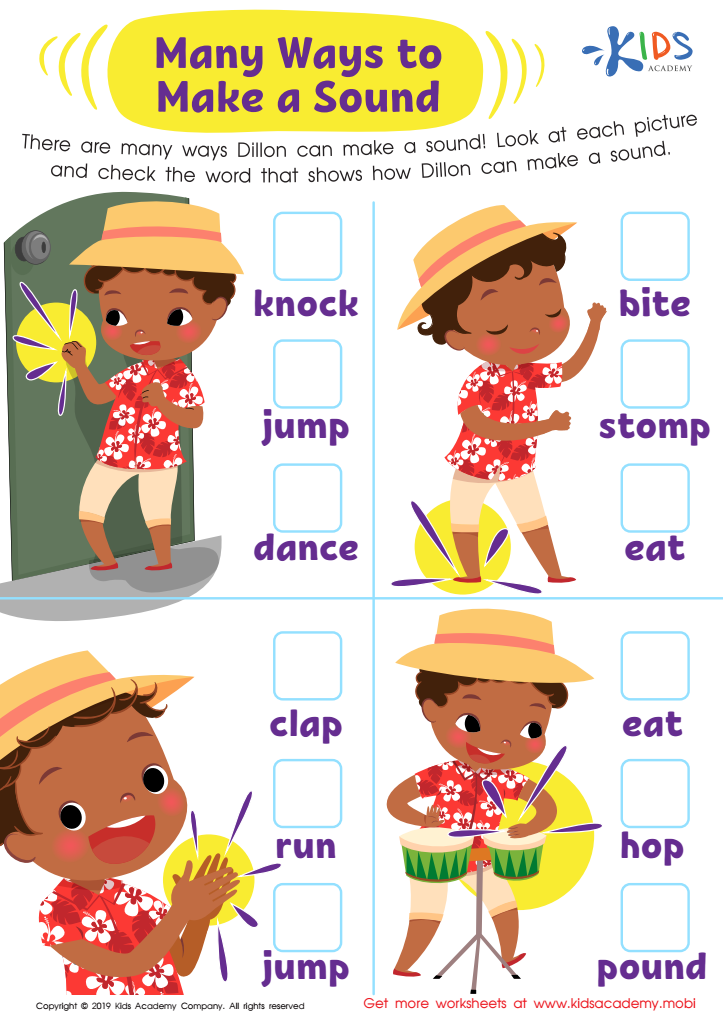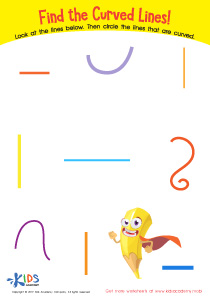Sound identification Alphabet Worksheets for Ages 4-7
5 filtered results
-
From - To
Discover our engaging Sound Identification Alphabet Worksheets, designed for ages 4-7. These fun and educational worksheets help young learners master the relationship between letters and sounds. Each worksheet focuses on identifying initial sounds, blending phonics, and matching letters with corresponding pictures. Perfect for both classroom and at-home learning, our worksheets support early reading skills, phonemic awareness, and alphabet recognition. With colorful graphics and interactive tasks, children will stay motivated and excited to learn. Make phonics practice enjoyable and effective with our Sound Identification Alphabet Worksheets! Explore now and nurture your child's literacy journey.


Letters B and F Tracing Worksheet


Phonological Awareness: Assessment 2 ELA Worksheet


Many Ways to Make a Sound Worksheet


Phonological Awareness: Assessment 2 Worksheet


Phonological Awareness: Assessment 3 Worksheet
Sound identification in the alphabet for children aged 4-7 is critical and deeply influences their literacy development. At this foundational stage, children learn to associate sounds with their corresponding letters—a skill pivotal for reading and writing fluency. When parents and teachers prioritize sound identification, they lay solid groundwork for understanding phonics. Phonics involves recognizing patterns in words, which eventually aids in decoding unfamiliar words and enhances spelling ability.
Sound identification also boosts children's listening and speaking skills. Identifying letter sounds sharpens their auditory discrimination, allowing them to pinpoint differences and similarities in sounds, fostering better communication skills. Furthermore, it builds confidence. As children master basic phonetic principles, they feel more competent and motivated to tackle more complex reading and writing tasks.
Early literacy skills are predictors of future academic performance. Successful early readers tend to perform better academically long-term. Therefore, when parents and teachers invest time in teaching sound identification, they aren’t just teaching literacy but setting the stage for a child’s overall educational journey. Providing engaging, consistent, supportive practices at school and home can make a lasting impact, cultivating a love for reading and learning that will benefit children across all subjects. Hence, making this early effort profoundly beneficial for children's broader intellectual growth.

 Assign to My Students
Assign to My Students














